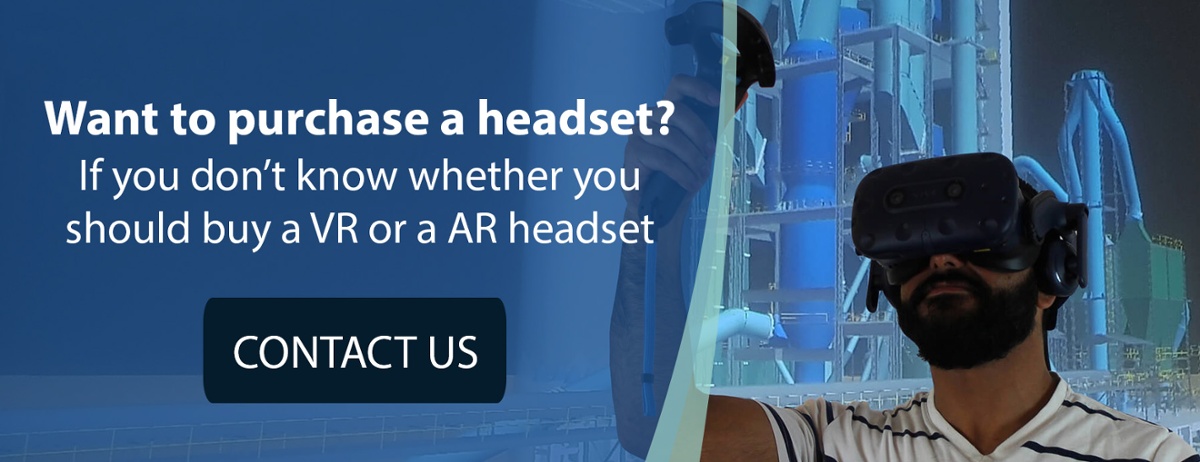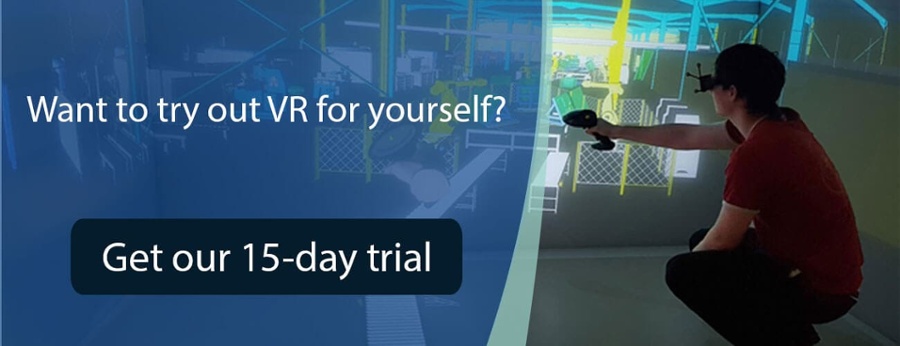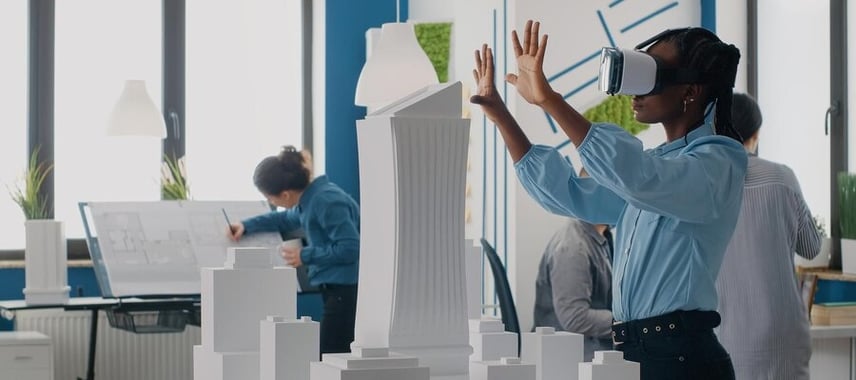
There’s no escaping the latest buzzword: the “Metaverse”. Is it the next step for Internet? A virtual universe just like the ones we saw in science fiction? Or just a fancy new way to categorize extended reality technology (XR)? In the midst of all the new emerging technologies, metaverse, which was announced barely one year ago, has entered the Gartner Hype Cycle. In this article, we will help you understand what this term mean, and how it will impact your use of AR and VR.
What is the Gartner Hype Cycle?
The Gartner Hype Cycle is a graph that represents innovative and disruptive technologies you should keep an eye on. Each year, Gartner creates more than 90 Hype Cycles, so they can advise their clients over time, from the innovation to mainstream adoption. We briefly talked about the Gartner Hype Cycle for VR in a previous article. Take a look if you want to know more about how it works, and what it means for a technology to appear on it.
This journey is likely to happen to the metaverse. We’re already hearing about it, but we might need 10 years for the technology to be widely used by professionals.
What is the Metaverse?
How do you define the Metaverse?
According to Matthew Ball, who wrote a series of essays about the Metaverse, you can’t have a single definition of the Metaverse, especially when it has only just begun to emerge. The Metaverse has some foundational characteristics:
- An immersive experience in a virtual world
- Real-time interactions within a VR environment and with and 3D models
- Software that will act on behalf of the users to retrieve, render and facilitate end-user interaction with the web content (such as an internet browser, a search engine…)
Ultimately, the full version of the Metaverse will also include an interoperability across all platforms and devices, thousands of users interacting simultaneously and use cases that go well beyond gaming.
The short version from Ball would be that “the Metaverse is a 3D version of the Internet and computing at large”. Instead of a media-based experience of the internet (photos, videos, websites), the next user interface and user experience will be through different AR and VR platforms. Think of the Metaverse as being within the computer and inside the internet.
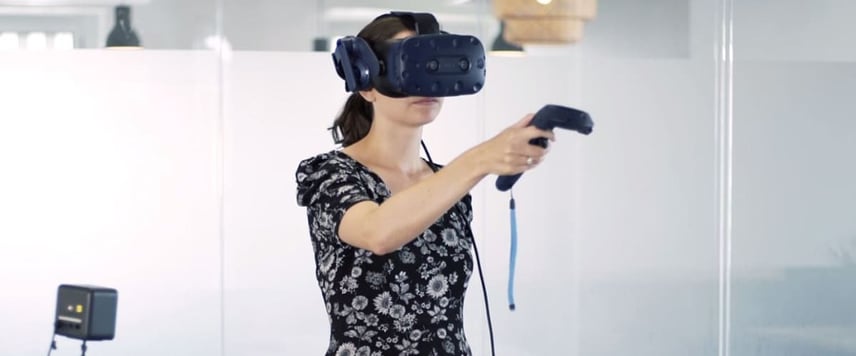
When you go to the internet, you generally use a browser to type URLs, or a browser to access different medias. Instead of websites, you will have several virtual worlds that will let you interact with CAD models and 3D data. Just like internet is the “place” you can go to access all these websites, the metaverse will allow you to enter the different virtual worlds.
What are the metaverse use cases for professionals?
Most of the use cases for enterprise use have yet to be discovered, as the Metaverse is a budding technology. According to McKinsey the current professional use cases are:
- Enhanced remote collaboration: it allows for an immersive 3D space that enables better remote work, while diminishing the need for co-locating. This is a clear continuation of our vision of the future of VR for professionals.
- Reimagined learning and development: computer-generated simulations in real-like settings will open many possibilities for specialized training.
- Digital twins: by building digital replicas in VR of physical fabrics and objects that generate data in real-time, which help companies generate richer analysis, thus improving their decision-making.
As you can see, these professional use cases can already be enabled by XR collaboration platforms.
On a long-term scale, Metaverse-related technologies are expected to expand and be further amplified by exponential technologies such as wireless broadband networks, cloud computing, robotics, artificial intelligence and 3D printing. In other words, the metaverse is expected to be an important aspect of Industry 4.0.
So, will you need a VR headset to experience the Metaverse?
Many experts argue that you won’t necessarily need an augmented and virtual reality headset to get in the Metaverse. It will depend on your use case. For instance, thanks to innovations like Cloud VR, all you will need is a mobile phone and the 5G network. So, it is likely that tablets and smartphones will remain one of the main accesses to the Metaverse, especially for mainstream use. However, we need 5G to be deployed widely.
For business use though, we suggest you look at head mounted displays such as HTC Vive Pro, Meta Quest 2 or Oculus Rift, the Varjo-XR 3. HMDs will be necessary for engineers to work in good conditions on 3D models. Indeed, tethered headsets typically offer a better screen resolution and a wider field-of-view. They are also more adapted if you need additional tracking devices like body tracking, hand tracking or eye-tracking.
More information in our article about the best AR/VR Headsets for Engineers in 2022.
How will the metaverse impact the AR/VR market? (With a 10+ years outlook)
At present, the metaverse is not ready for professional use
In August 2022, the 2022 Gartner Hype Cycle referenced some immersive technologies, including the metaverse. It is a very important event. Why? Because many companies use it to validate their investment in the latest technologies. Gartner Hype Cycle is a useful endorsement to democratize the metaverse and AR/VR for engineers.
However, the road to metaverse is quite long, mostly because it will require:
- Many technology disruptions to work properly, such as smart interfaces in extended reality, natural language processing, haptics, a computational efficiency improvement of over 1,000x today’s levels…
- Heavy hardware investments in areas such as compute, storage, network infrastructure, consumer hardware, and VR collaboration platforms
- Social acceptance by the industries, when the joint professional use cases are ready for use.
Easily said than done.
As a matter of fact, Gartner warns companies against investing too much in one platform. We can’t help but agree with this warning. For now, what the metaverse offers is not really different from what you can find on an XR platform.
But the metaverse will have a huge impact on AR/VR use
The metaverse is based on immersive technologies that enable multisensory interactions with virtual environments, digital objects and people such as augmented reality, virtual reality and mixed reality. Currently, the metaverse is under construction. Theoretically, it will be a web of virtual worlds where 3D holograms would be able to travel seamlessly among social VR platforms and AR collaborative spaces.
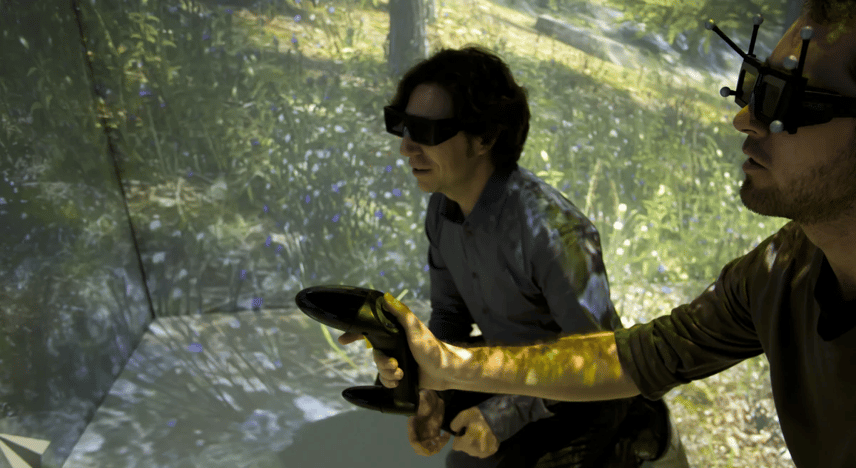
Currently, it is possible for professionals to use a virtual space to collaborate and interact without restrictions with virtual and/or physical objects. The goal of the metaverse is to allow cross-platform and cross-technology meetings and interactions, where some users are in VR and others in AR environments. A common principle of the metaverse is user teleportation between virtual environments and software interconnection.
Software interconnection is something we work on at TechViz, as our VR collaboration platform is made for multi-system collaboration. Any participant to a VR session can share a CAD model from more than 200 industrial CAD application, and each participant can visualize it on any display system: immersive room, HMD, Powerwall…
The metaverse and its underlying virtual and augmented reality platforms promises to transform many industry sectors. Many use cases are already available for companies. But there are still challenges to face before all companies have their own VR platform, the way we have websites and other web applications in our professional environment.
So why the current hype around the Metaverse?
By 2026, 30% of organizations will have products and services ready for the Metaverse (Gartner). By 2030, the total addressable market for the Metaverse could be between $8 trillion and $13 trillion, with total Metaverse users around 5 billion (Citi). Those numbers attracted over $177 billion in investment to the Metaverse since the start of 2021 (McKinsey). No wonder the tech giants like Meta, Microsoft, Apple and Google investing big money in making it a reality.
Regardless of what the metaverse will be in 10 years from now, we at TechViz believe that we will continue to see enormous advances with immersion technologies. Despite the current obsession with the metaverse, the idea still needs a lot of work: many innovations to be viable for enterprise use, proper hardware available for all, interoperability… As AR/VR experts, we will make a battery of tests on the metaverse as soon as it gets ready for industrial use. Then we will be able to advise you on how to use the metaverse for your business.
Perhaps, in 10 years, we’ll hang out in the metaverse from time to time. Or perhaps we’ll think back about how naïve people were in 2022 to have questioned the rise of the metaverse.






 Back to Blog
Back to Blog
